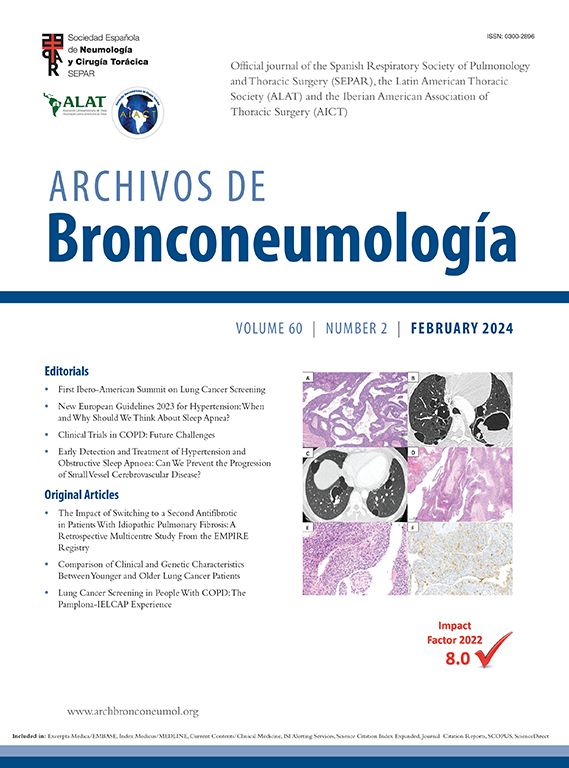肺癌化疗/放疗/免疫治疗耐药性中的 NRF2 信号通路:超越冰山一角
IF 8.7
3区 医学
Q1 RESPIRATORY SYSTEM
引用次数: 0
摘要
肺癌是全球男性和女性最常见的癌症死因之一。目前治疗肺癌的方法有手术、化疗、放疗和免疫疗法等多种组合。然而,由于肿瘤突变负荷(TMB)频率较高,预后仍然相对较差。核因子 E2 相关因子 2(NFE2L2/NRF2)通常被认为是抗氧化酶和解毒蛋白表达的主要调节因子,并参与细胞保护。相反,NRF2 甚至被认为会诱导肿瘤转移和支持肿瘤进展。Kelch-like ECH-associated protein 1(KEAP1)通过 CUL3 介导的泛素化和蛋白酶体的连续降解,在负向调节 NRF2 活性方面发挥着重要作用。大量研究表明,KEAP1/NFE2L2/CUL3 基因的遗传改变会导致肺癌中 NRF2 及其靶基因的表达增加。因此,这些研究充分证明了 NRF2 在肺癌中的双重作用。在这篇综述中,我们通过关注肺癌的细胞系、小鼠模型和转化研究,探讨了 NRF2 信号在耐药性中的作用机制。最后,我们强调了针对 NRF2 抑制的潜在治疗策略,并讨论了肺癌中与 NRF2 活性相关的生物标志物。总之,我们的文章专门详细讨论了 NRF2 信号通路在治疗(尤其是免疫疗法)耐药性中的作用及其在肺癌治疗中的治疗途径。本文章由计算机程序翻译,如有差异,请以英文原文为准。
NRF2 Signaling Pathway in Chemo/Radio/Immuno-Therapy Resistance of Lung Cancer: Looking Beyond the Tip of the Iceberg
Lung cancer is one of the most common causes of cancer death in men and women worldwide. Various combinations of surgery, chemotherapy, radiation therapy and immunotherapy are currently used to treat lung cancer. However, the prognosis remains relatively poor due to the higher frequency of tumor mutational burden (TMB). Nuclear factor E2-related factor 2 (NFE2L2/NRF2) is often considered a primary regulator of the expression of antioxidant enzymes and detoxification proteins and is involved in cytoprotection. On the contrary, NRF2 is even known to induce metastasis and support tumor progression. Kelch-like ECH-associated protein 1 (KEAP1) plays an important role in negatively regulating NRF2 activity via CUL3-mediated ubiquitinylation and successive proteasomal degradation. Extensive research has shown that the genetic alterations of KEAP1/NFE2L2/CUL3 genes lead to increased expression of NRF2 and its target genes in lung cancer. Thus, these studies provide ample evidence for the dual role of NRF2 in lung cancer. In this review, we discussed the mechanistic insights into the role of NRF2 signaling in therapy resistance by focusing on cell lines, mouse models, and translational studies in lung cancer. Finally, we highlighted the potential therapeutic strategies targeting NRF2 inhibition, followed by the discussion of biomarkers related to NRF2 activity in lung cancer. Overall, our article exclusively discusses in detail the NRF2 signaling pathway in resistance to therapy, especially immunotherapy, and its therapeutic avenue in the treatment of lung cancer.
求助全文
通过发布文献求助,成功后即可免费获取论文全文。
去求助
来源期刊

Archivos De Bronconeumologia
Medicine-Pulmonary and Respiratory Medicine
CiteScore
3.50
自引率
17.50%
发文量
330
审稿时长
14 days
期刊介绍:
Archivos de Bronconeumologia is a scientific journal that specializes in publishing prospective original research articles focusing on various aspects of respiratory diseases, including epidemiology, pathophysiology, clinical practice, surgery, and basic investigation. Additionally, the journal features other types of articles such as reviews, editorials, special articles of interest to the society and editorial board, scientific letters, letters to the editor, and clinical images. Published monthly, the journal comprises 12 regular issues along with occasional supplements containing articles from different sections.
All manuscripts submitted to the journal undergo rigorous evaluation by the editors and are subjected to expert peer review. The editorial team, led by the Editor and/or an Associate Editor, manages the peer-review process. Archivos de Bronconeumologia is published monthly in English, facilitating broad dissemination of the latest research findings in the field.
 求助内容:
求助内容: 应助结果提醒方式:
应助结果提醒方式:


